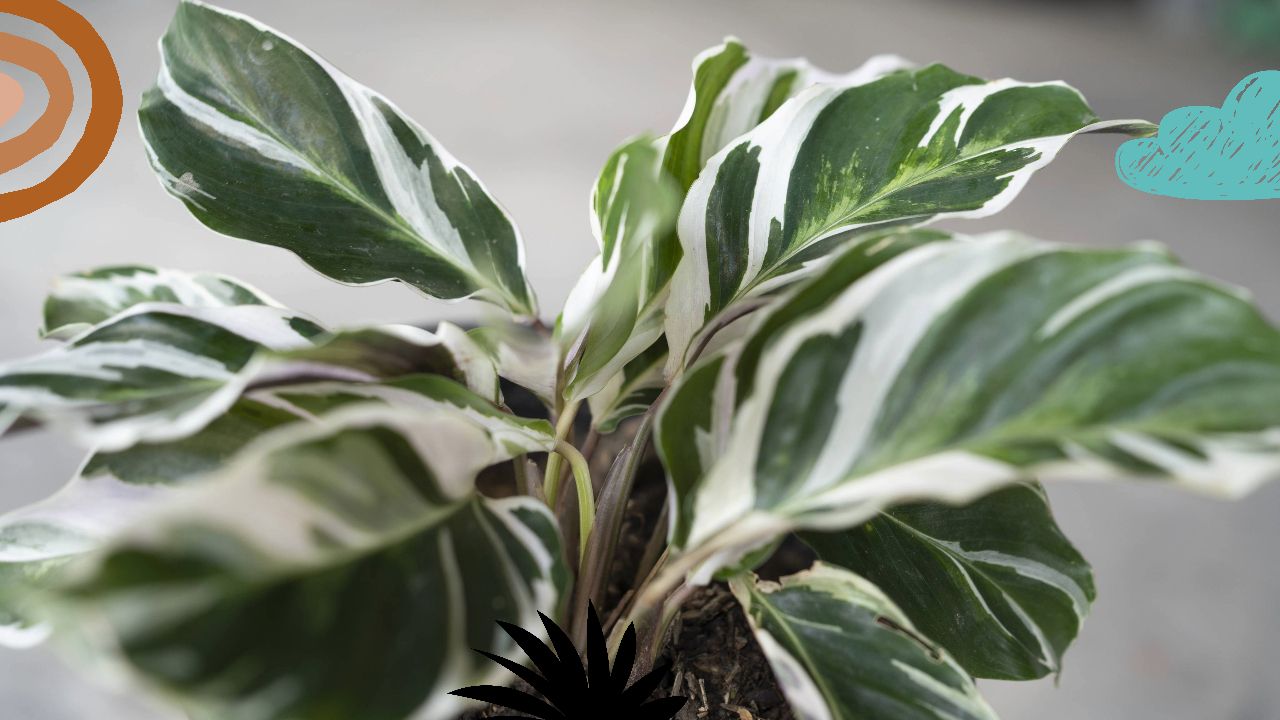
Introduction: Understanding Calathea White Fusion
Calathea White Fusion is more than a houseplant; it's a work of art. With its mesmerizing variegated foliage, blending white, green, and lilac, the Calathea White Fusion is a visual delight that turns any space into a tropical oasis.
Belonging to the family of tropical plants known as prayer plants, its dark green leaves dramatically fold at night, akin to hands in prayer. What makes this variety stand out is not just its appearance but its adaptability. Although it thrives in bright indirect light, Calathea White Fusion can also tolerate spaces where direct sunlight is limited.
This particular tropical houseplant has charmed plant enthusiasts for its graceful elegance and unique care requirements. From seasoned gardeners to those who are just venturing into the world of tropical houseplants, the Calathea White Fusion offers both beauty and a delightful challenge.
Ready to explore the world of Calathea White Fusion? Dive into our Ultimate Guide to Indoor Plant Care and discover how to make this stunning plant a centerpiece in your home.
Join our newsletter
Stay on top of the latest in landscaping and lawn care with one valuable tip right in your inbox every Saturday morning.
Calathea White Fusion: A Close Look
Physical Characteristics
Calathea White Fusion is indeed a spectacle of nature. With its stunning variegated foliage that dances between shades of green, white, and sometimes a touch of purple, it's no wonder it's a favorite among plant enthusiasts. The dark green leaves are elegantly marked with a feather-like pattern, giving it a whimsical appearance.
These striking leaves don't just catch the eye; they tell a story of the plant's tropical nature. As a part of the prayer plant family, Calathea White Fusion's leaves move in response to the light, folding up at night, an adaptation to its native habitat.
Native Habitat and Tropical Nature
Calathea White Fusion's origins trace back to the lush tropical forests of South America. In its native habitat, this plant thrives under the canopy of towering trees, basking in filtered bright light rather than direct sun. The humid environment, consistent rainfall, and well-draining soil are key to its survival and flourishing beauty.
What's fascinating about Calathea White Fusion is its adaptation to the indoor environment. While it cherishes a humid environment similar to its tropical roots, it has a remarkable tolerance for various indoor conditions. This makes it not just a beautiful addition to your home but a versatile one, capable of bringing a touch of the tropics to any room.
Understanding its tropical nature and adapting your care to match its native habitat will not only ensure your Calathea White Fusion thrives but will connect you to a world of lush forests and exotic landscapes right in your living room.
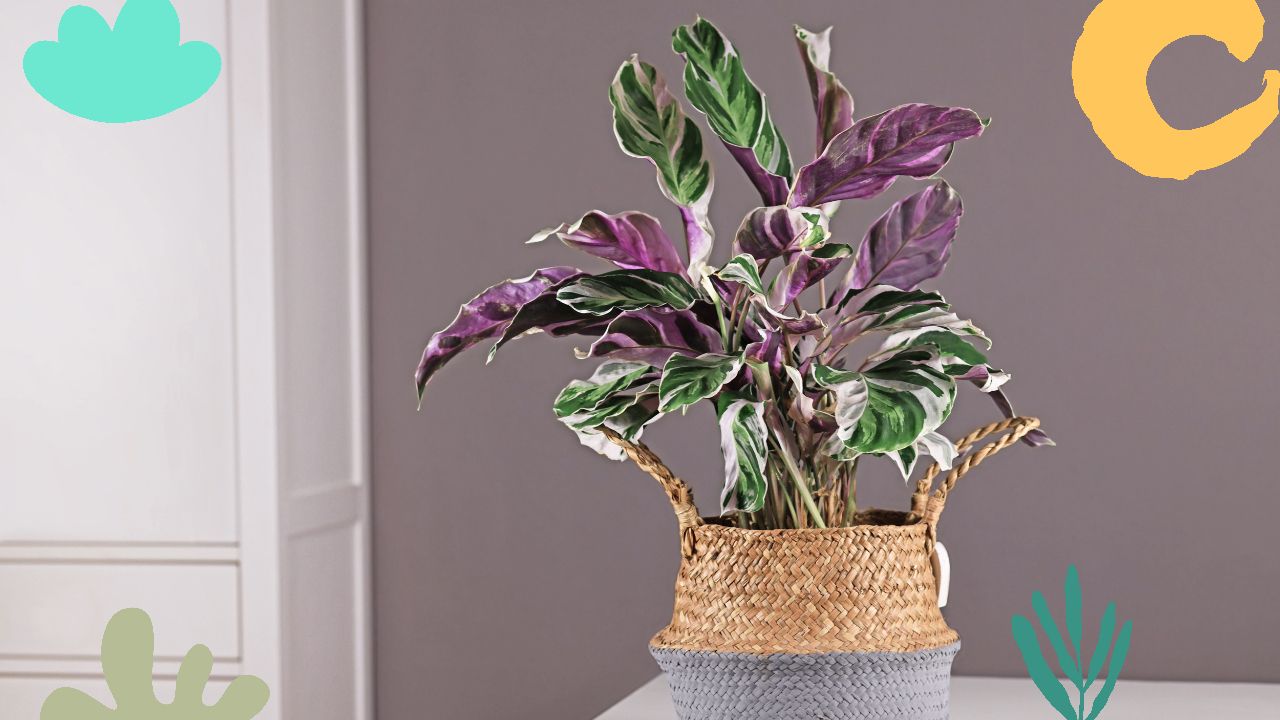
Ideal Lighting Conditions for Calathea White Fusion
Light plays a pivotal role in the health and beauty of a Calathea White Fusion. Finding the right balance, especially the blend between bright indirect light and avoiding too much direct sunlight, is crucial for the plant's thriving. Let's explore the key aspects of ideal lighting for this exotic plant:
The Importance of Bright Indirect Light
Calathea White Fusion prefers bright indirect light that resembles the filtered sunlight of its native tropical habitat. This specific lighting condition encourages vibrant variegated foliage without causing harm like brown edges or stunted growth, which can result from too much direct sunlight.
Bright indirect light allows the plant to conduct photosynthesis efficiently without scorching the leaves. Using sheer curtains or placing the plant in a well-lit room with indirect light will replicate the preferred conditions found in the wild.
Learn more about indoor plant light requirements for a better understanding of how to meet the needs of your Calathea White Fusion and other tropical plants.
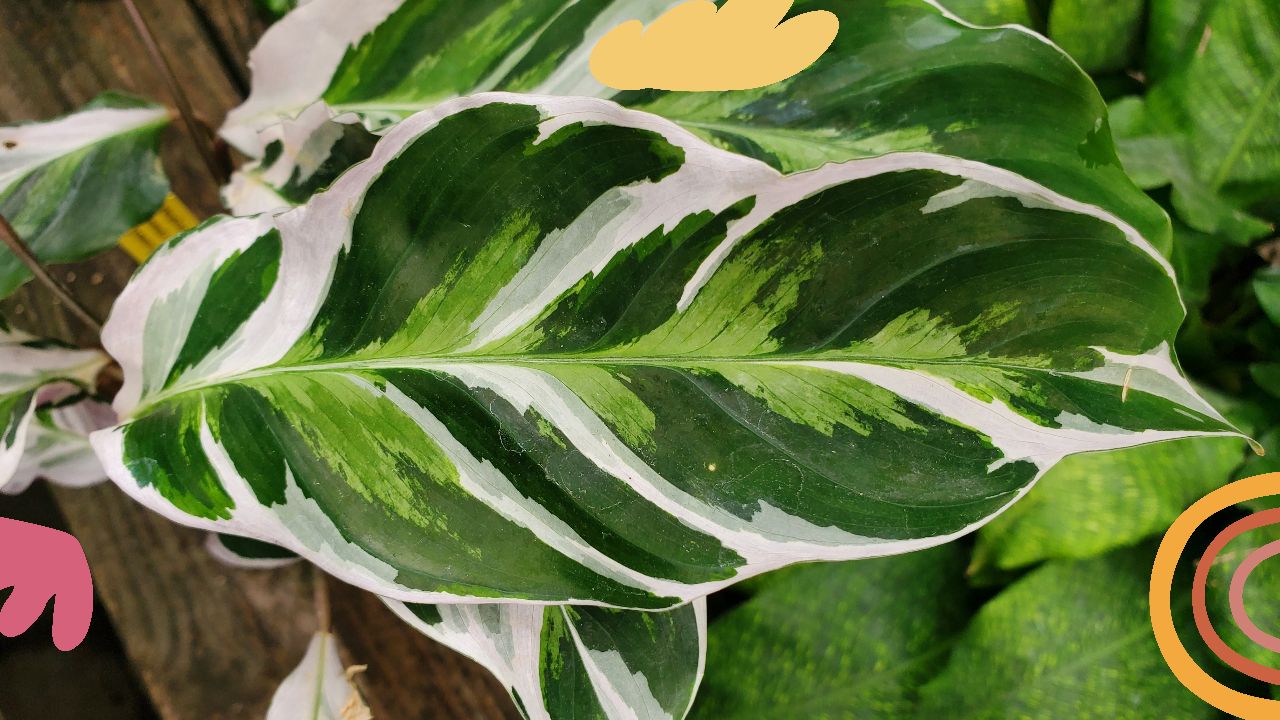
How to Provide Filtered Bright Light and Avoid Direct Sunlight
Providing filtered bright light while avoiding direct sunlight may sound tricky, but it's easier than you think. Here's a step-by-step guide:
- Choose the Right Location: A north or east-facing window is typically ideal, offering bright light without harsh direct sun. West and south-facing windows can work too, but a sheer curtain may be needed to filter the light.
- Use Sheer Curtains: A sheer curtain between the plant and the window diffuses the sunlight, creating the perfect blend of bright indirect light.
- Monitor the Plant: Pay close attention to the leaves. If you notice signs of too much bright light or too much direct sunlight, such as yellowing or brown edges, it may be time to adjust the lighting.
- Consider Artificial Lights: If natural light is scarce, consider using grow lights designed for tropical houseplants. These can provide the filtered bright light needed without the risk of direct sunlight.
- Avoid Direct Sun: Placing Calathea White Fusion in direct sunlight can lead to scorched leaves and a loss of the stunning variegation. Always make sure the light is filtered or indirect to keep the plant healthy and vibrant.
In conclusion, mastering the lighting conditions for Calathea White Fusion is essential for its growth and beauty. By mimicking the natural filtered bright light found in its tropical habitat and avoiding direct sunlight, you can enjoy a flourishing and radiant Calathea White Fusion in your home.
Watering and Soil Requirements
Calathea White Fusion, like other prayer plants, has specific soil and watering requirements that allow it to flourish. By mimicking the moist soil of its native tropical habitat and utilizing a well-draining soil mix, this Calathea plant can truly thrive. Here's a detailed look at the proper watering and soil needs:
Moist Soil and Well Draining Soil Mix
The key to keeping your Calathea White Fusion healthy is to maintain consistently damp soil without allowing the plant's roots to sit in excess water, which can lead to root rot.
- Soil Mix: A well-draining potting soil mix, possibly containing peat moss, coco coir, or orchid bark, will retain moisture while avoiding waterlogging. Drainage holes in the pot are essential to prevent rotting roots.
- Moisture Level: Using a combination of fresh soil and regular monitoring of the soil line will ensure that the plant receives consistent moisture without becoming too soggy. The goal is to keep the soil moist but never waterlogged.
Join our newsletter
Stay ahead of the curve in all things outdoor.
Get the inside scoop on the latest landscaping, lawn care, and fencing trends with 1 actionable tip every Saturday morning.
When and How to Use Rainwater, Tap Water, or Distilled Water
Calathea White Fusion is sensitive to the type of water used. Here's how you can decide what water to use:
- Rainwater: Ideally suited for tropical plants, rainwater can be collected and used to water your Calathea White Fusion. This natural water source is gentle and beneficial for the plant.
- Tap Water: If using tap water, let it sit for about a day to allow the chlorine to evaporate. However, be cautious with tap water if it contains high mineral content, as this may harm the plant.
- Distilled Water: For the best results, distilled water or filtered water can be used to avoid potential mineral buildup in the soil.
Understanding humidity levels and the role of a humidistat can also contribute to the optimal watering routine for Calathea White Fusion and other tropical houseplants.
Propagation and Repotting of Calathea White Fusion
Propagation and repotting are essential aspects of growing Calathea White Fusion, allowing you to multiply your plant collection and ensure the continued health of the mother plant. Here's a guide to understanding these processes:
Using Sterilized Knife for Root Division and Retaining Mother Plant
- Root Division: When your Calathea White Fusion reaches a substantial size, you may want to propagate it through root division. Utilizing a sterilized knife ensures a clean cut without harming the root system or the entire plant.
- Retaining Mother Plant: Carefully separate the baby plants from the mother plant, ensuring that each division retains some roots. The mother plant should be re-potted into fresh potting mix, while the new divisions can be potted separately.
- Aftercare: Following the root division, both the mother plant and baby plants will benefit from a high humidity environment to promote new growth.
Discover more detailed methods and techniques in our guide to plant propagation.
When to Use Fresh Potting Mix and Managing the Root System
- Fresh Potting Mix: Utilizing a fresh potting mix with well-draining properties, possibly including peat moss or coco coir, is essential when repotting Calathea White Fusion. It encourages healthy root growth and helps avoid root rot.
- Managing the Root System: Be gentle with the plant's roots during propagation and repotting. A root ball free from rotting roots should be placed at the correct soil line in a pot with drainage holes, ensuring it's neither too deep nor too shallow.
- Optimal Timing: The best time for propagation and repotting is during the active growing season, usually in spring or early summer. This gives the plant ample time to settle and grow in its new environment.
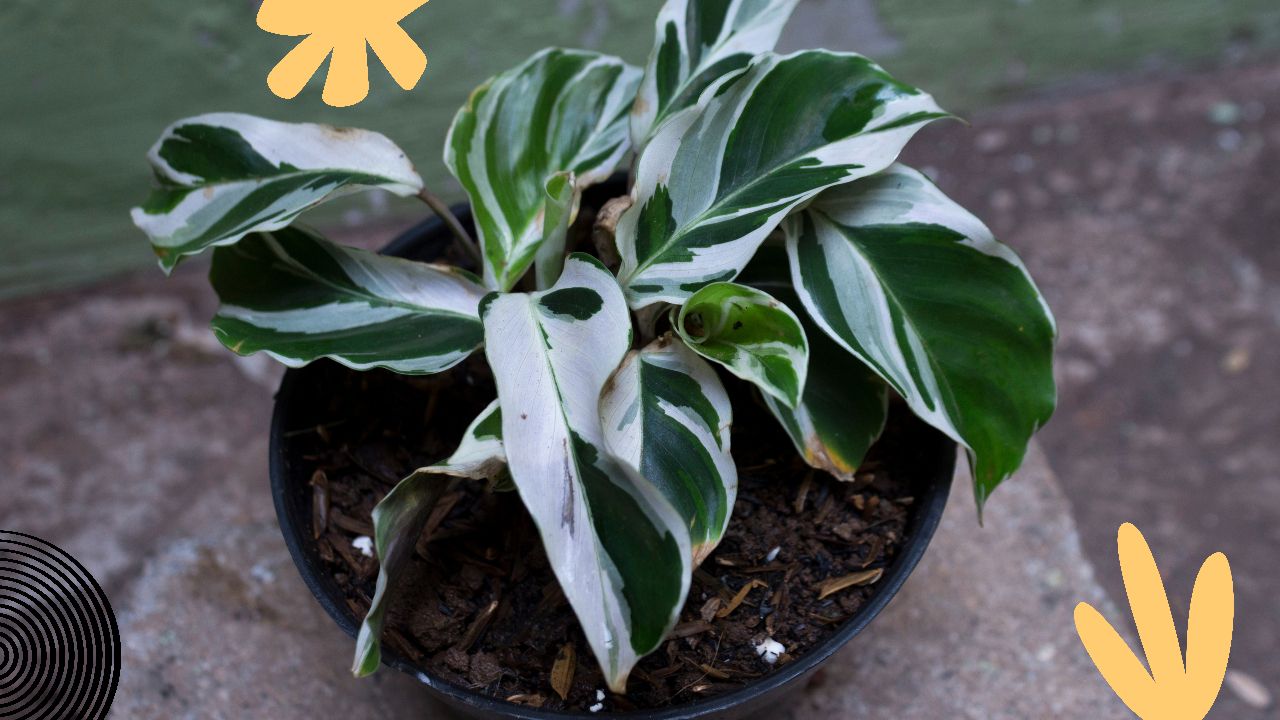
Calathea White Fusion: Toxicity and Safety Concerns
The subject of toxicity in Calathea White Fusion has been a common inquiry among plant enthusiasts. Understanding potential risks and safety precautions can help foster a harmonious environment for both your plant and other inhabitants of your home.
Is Calathea White Fusion Toxic? Understanding Potential Risks
Calathea White Fusion is not considered toxic to humans or pets. Often found as a tropical houseplant, this specific Calathea plant is known for its striking variegated foliage rather than any harmful properties. That said, as with other plants, it's still wise to exercise general caution.
How to Handle the Plant Safely with Other Plants and Pets
- Placement: Keep Calathea White Fusion in a location that is accessible for care but away from curious pets or children. Bright indirect light is preferred, as too much direct sunlight can cause issues like brown edges on the leaves.
- Integration with Other Plants: Calathea White Fusion thrives well with other tropical plants. Just be cautious not to provide too much bright light, which could affect other plants adversely.
- Pet Safety: Although Calathea White Fusion is not toxic, it's always a good practice to monitor how pets interact with any plants to avoid any unexpected reactions.
- Use of Fertilizers: When applying fertilizer to Calathea White Fusion, ensure that any excess water is drained properly through drainage holes, to avoid root rot and ensure the safety of other plants and pets.
Calathea White Fusion's non-toxic nature makes it a safe addition to homes with other plants and pets. Understanding its needs for indirect light, well-draining soil mix, and proper placement will ensure that your Calathea White Fusion continues to grow without posing risks to other household members.
Final Tips for Thriving Calathea White Fusion
Growing Calathea White Fusion can be a delightful experience. Its striking variegated foliage and suitability to a bright light environment make it a favored choice among plant lovers. Below, we explore the essential tips to keep your Calathea White Fusion thriving and adding beauty to your living space or even a dedicated Meditation Garden with HeyHome.
Humidity Levels and Pebble Tray
Calathea White Fusion thrives in a high humidity environment. To keep humidity levels ideal:
- Use a Pebble Tray: Fill a tray with water and pebbles, placing the pot on top. The evaporating water increases humidity.
- Monitor with a Humidistat: Consistent humidity is key. Consider using a humidistat to maintain the optimal moisture levels.
- Avoid Direct Sun: Too much direct sunlight can reduce humidity quickly. Filtered bright light is best for this tropical plant.
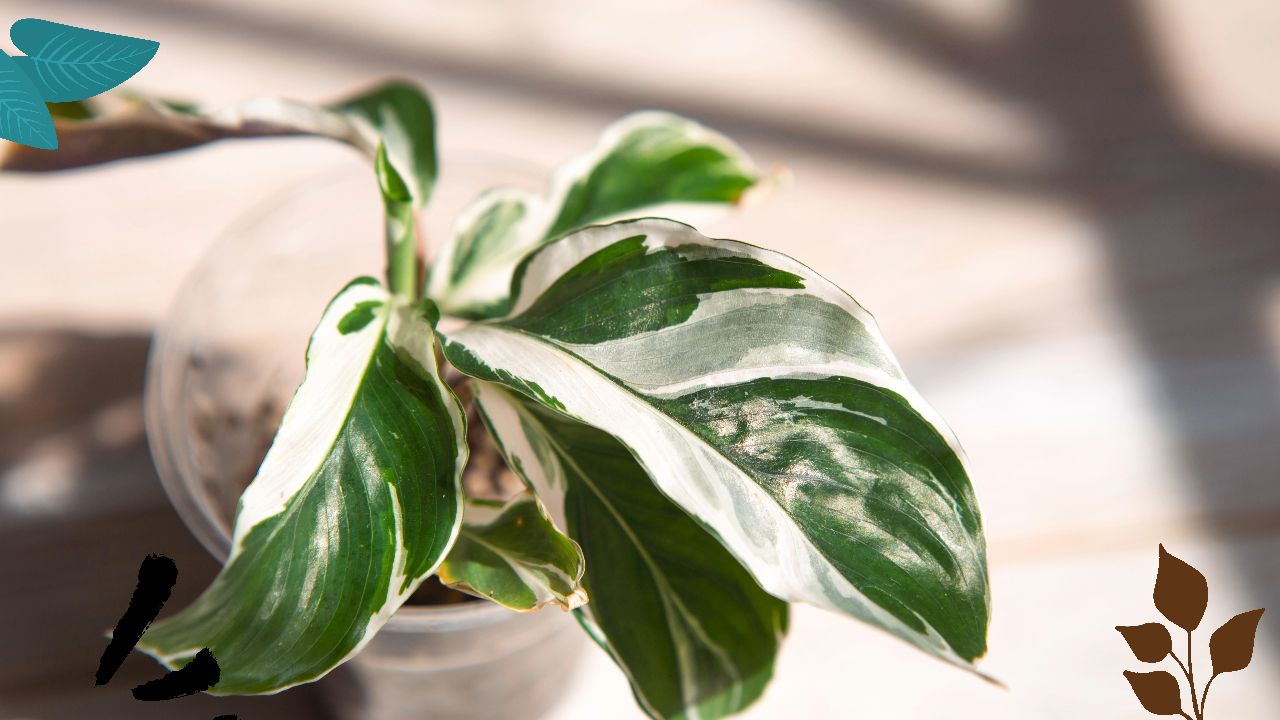
Fertilizing and Retaining Moisture with Coco Coir
- Fertilizing: During the active growing season, fertilize Calathea White Fusion about once a month with a balanced fertilizer. This provides the nutrients necessary for new growth.
- Coco Coir for Moisture Retention: Mix coco coir into the soil mix. This helps retain moisture without causing rotting roots, aiding in a consistently damp soil environment.
The Joy of Growing Calathea White Fusion in a Bright Light Environment
Growing Calathea White Fusion in a bright light environment not only satisfies the plant's needs but also brings joy through its vibrant appearance. However, remember:
- Avoid Too Much Bright Light: Balance is key. Filtered bright light, not direct sunlight, is the preference of Calathea White Fusion.
- Pair with Other Tropical Plants: In a bright light environment, Calathea White Fusion pairs beautifully with other tropical plants, creating a lush aesthetic.
With careful attention to humidity levels, proper fertilizing, and a love for bright indirect light, your Calathea White Fusion can become a cherished part of your home or garden. Embrace the joy of growing this stunning tropical houseplant, and explore further possibilities like creating a peaceful meditation space with HeyHome.
Conclusion: Calathea White Fusion Care Summarized
The care of Calathea White Fusion is a rewarding journey that opens doors to the world of tropical houseplants. From its beautiful variegated foliage to its need for precise light and moisture, the Calathea White Fusion brings life and elegance to any indoor setting.
The Importance of Light
- Bright Light: Calathea White Fusion thrives in bright indirect light. This allows the dark green leaves to flourish without risking the plant's health.
- Indirect Light: Filtered bright light, through a sheer curtain or similar means, replicates its native habitat, providing a balanced growth environment.
- Avoiding Too Much Direct Sunlight: Excessive direct sunlight can cause browning leaves and stunted growth. Therefore, it's crucial to avoid too much direct sunlight to keep your Calathea White Fusion healthy.
Explore Calathea White Fusion Care with Confidence
Calathea White Fusion care need not be intimidating. With understanding and attention to detail, it's an accessible and rewarding endeavor. Whether you're a seasoned houseplant enthusiast or new to the world of growing tropical plants, you can explore more tips and guidance in HeyHome's Gardening Category.
Embrace the joy of caring for Calathea White Fusion. Allow its unique beauty to enhance your living space and provide a connection to the natural world. The journey of caring for this plant, understanding its needs and watching it flourish, can be a fulfilling part of your indoor gardening experience.
Join our newsletter
Stay ahead of the curve in all things outdoor.
Get the inside scoop on the latest landscaping, lawn care, and fencing trends with 1 actionable tip every Saturday morning.